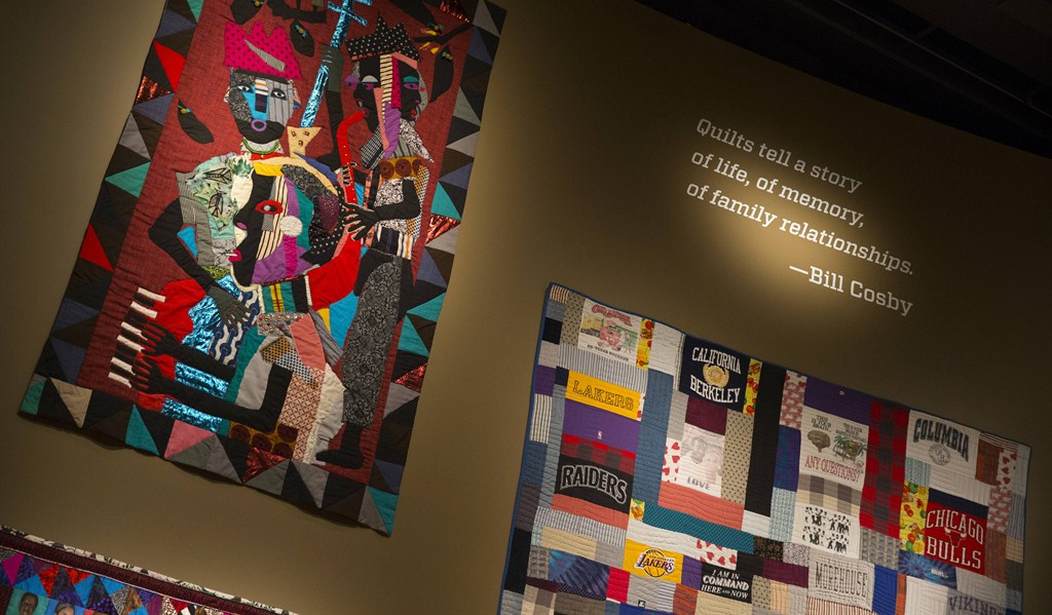The Smithsonian Institution, has stood as an emblem of American knowledge and values since its establishment. Its vast spaces have been used to advance technological progress, social change and, in the realm of the arts, what is good and beautiful.
In 2015, my painting 'Unafraid and Unashamed' was submitted to the Smithsonian’s National Portrait Gallery for inclusion in an exhibit on American political art. The scoffing response from the museum’s director, Kim Sajet, was that it was “too big”, “too political”, “too pro-Trump” and finally "no good."
The abrupt, arbitrary dismissal of an artist’s work may cause hurt feelings. However, the denial of one’s right to free speech aroused far greater passion and a demand for a remedy.
What is the entity status of the Smithsonian Institution? This is the unanswered question of federal Law, that my current petition for certiorari, at the Supreme Court, (prepared without the assistance of counsel), is seeking to be answered.
Three federal courts, The US Court of Federal Claims, The US District Court for the District of Columbia, and the Court of Appeals for the District of Columbia Circuit, through which my case, [Julian Marcus Raven v. The Smithsonian National Portrait Gallery (USA)] has already navigated, have unsurprisingly been confused about which laws apply to the Smithsonian. They have consequentially denied an ordinary citizen’s free speech rights.
This is nothing new. In 1971, William W. Warner, assistant Smithsonian secretary, wrote a speech for then Smithsonian Chancellor of the Board of Regents, Chief Justice Warren Burger, in which he asked this remarkable question:
Recommended
"But just what is the Smithsonian Institution? Why does it look and operate the way it does? It most certainly is not a government agency, nor a component of the executive branch of the federal government. It is not a part of the Congress or the Judiciary...Moreover, the Smithsonian Institution, as a trust instrumentality, continues to confuse members of Congress, the courts, and the executive branch..."
If all three branches of the federal government are confused as to the answer to this question, We the People, to whom the Smithsonian Institution belongs, must petition to know the answer.
The mystery of entity confusion caused Amtrak, another federal enigma, to require the Supreme Court to answer the identical question in the case of LeBron v. National Railroad Passenger Corporation. Similarly, a political artist, Michael LeBron, a Democrat, was denied the display of political art on the Spectacular screen at Penn Station in New York City, claiming his 1st Amendment free speech rights were violated.
In LeBron, Amtrak argued that it was absolutely no part of the federal government, in order to skirt its constitutional constraints, denying LeBron his 1st Amendment political free speech rights. The Supreme Court, in an 8-1 majority decision, written by Justice Scalia, including Justices Breyer, Ginsburg and Thomas, ruled differently. They tied Amtrak to the Constitution because a government-appointed Board of Directors controls Amtrak, thus making Amtrak a federal creature.
The entity or agency question in my case however, is regarding the Smithsonian’s private trust status, which is merely run by the federal government. This status has been mysteriously denied by the District and Appellate Courts, denying me of my 1st and 5th Amendment free speech, due process and equal protection rights. By denying the Smithsonian trust status, the court also exonerated the Smithsonian officials of egregious breaches of fiduciary trust.
Private bequests, like the Will of James Smithson, entrusted to state or federal governments to run as fiduciary trustees, remain private institutions, which are merely run by the government, specifically in the role trustee. The beneficiaries of the Smithson trust, We the People, should be protected against government abuses, by both the Common Law of Trusts, and the U.S. Constitution.
My case is not complex. However, it is facing a complete, institutional distortion, of the entity, or agency status, of the Smithsonian Institution, by the Department of Justice and the Federal Courts. These federal actors have declared that the private institution, established for the ‘increase and diffusion of knowledge’ by the will of a private citizen, actually speaks for and as the federal government, exercising ‘government speech’ powers derived directly from the electorate. Consequentially, a participating, citizen-artist, is owed no fiduciary duties from the trustees, and the artist has no expressive political free speech, or any other constitutional rights!
Judge Trevor McFadden, from the District Court, declared that the actions of Kim Sajet, the Director of the Smithsonian National Portrait Gallery, were ‘insulting, partisan and odious’, yet at the same time, (since no laws apply to the Smithsonian), her actions, by default, were declared to be acceptable, fiduciary trustee conduct.
Never has a case been made against the Smithsonian Institution, that has reached all the way up to the Supreme Court! It is time for the US Supreme Court to answer this question;
Just what is the Smithsonian Institution?
Julian Raven is a commercial artist. His petition for Certiorari is pending before the Supreme Court.

























Join the conversation as a VIP Member